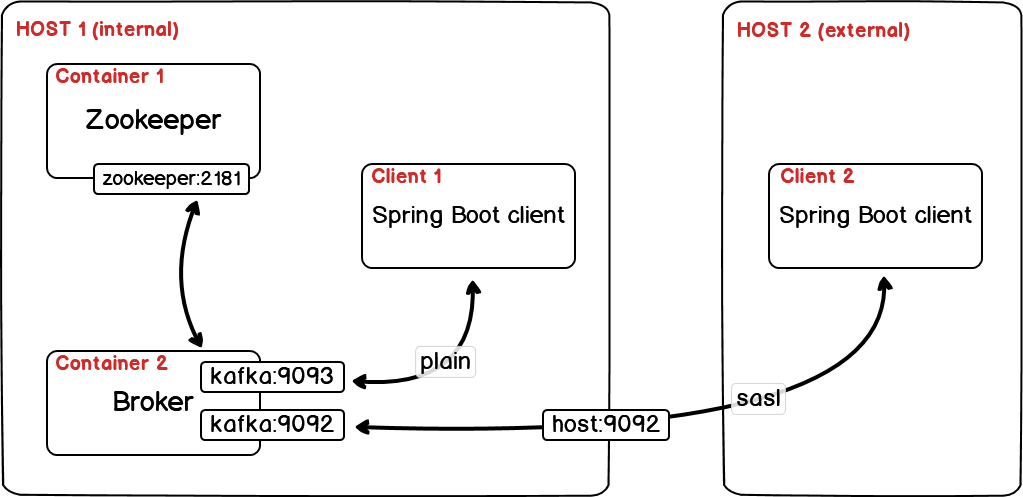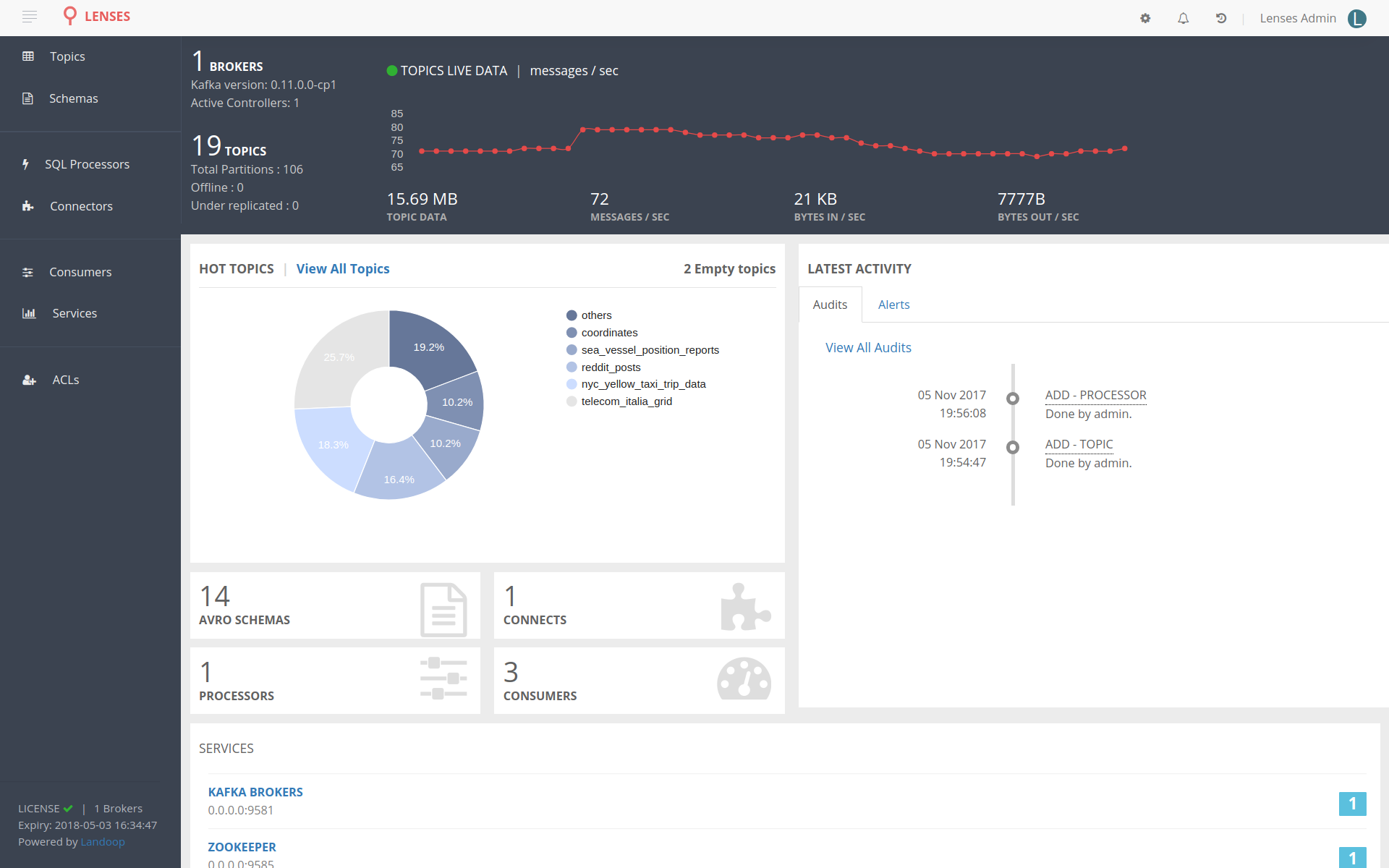- Install Kafka With Docker Command
- Install Kafka With Docker Kubernetes
- Install Kafka With Docker Container
- A minimal Docker image based on Alpine Linux with a complete package index and only 5 MB in size!
- The Java Application has run, and the print statement could be seen in the console. Save Docker Image to a tar file. Save the Docker Image file to a tar file, so that the image file could be copied to other machines through disk storage devices like pen-drive, etc.
- The Java Application has run, and the print statement could be seen in the console. Save Docker Image to a tar file. Save the Docker Image file to a tar file, so that the image file could be copied to other machines through disk storage devices like pen-drive, etc.
The latest kafkacat docker image is edenhill/kafkacat:1.6.0, there's also Confluent's kafkacat docker images on Docker Hub. If you are connecting to Kafka brokers also running on Docker you should specify the network name as part of the docker run command using the -network parameter. For local development and testing, you can run Pulsar in standalone mode on your own machine within a Docker container. If you have not installed Docker, download the Community edition and follow the instructions for your OS.
Docker Java Example
We shall learn following items in this Docker Java Example :
Build Docker Image with Java Application
1. Create a directory
A separate directory is useful to organise docker applications. For this Java Example, create a directory somewhere with name of your choice. We shall use the name java-application
2. Create Java Application
Create a simple Java File, in the directory java-application, with name HelloWorld.java containing the following content.
3. Dockerfile
Create a file with name Dockerfile. Dockerfile contains instructions to prepare Docker image with our Java Application.
Following is the content of Dockerfile.
4. Verify contents of java-application directory

Install Kafka With Docker Command
5. Build docker image
Login as root user. Navigate into java-application directory and run the following command. Instructions in the Dockerfile are executed. Dual boot high sierra and windows 10.
Please observe that there is dot (.) at the end of the command. Docker image is successfully built.

6. Check the docker image
To display available docker images, run the following command.
Run Docker Java Example
Run the following command to run the java-application Docker image in a container.
The Java Application has run, and the print statement could be seen in the console.
Save Docker Image to a tar file
Save the Docker Image file to a tar file, so that the image file could be copied to other machines through disk storage devices like pen-drive, etc.
Run the following command to save Docker image as a tar file.
If you want to do a clean install of macOS Sierra, or you have multiple Macs to install it on, then a bootable flash drive for is your best bet for easy installation. Here's how to make one. This tutorial will walk through how to perform a clean install of macOS High Sierra (10.13+). Important note: A clean install requires the Mac hard drive to be erased, meaning all data, files, photos, movies, apps – everything will be erased from the computer.
Saving might take few seconds. Wait for the command to complete.
Copy and Run the Docker Image file in another machine
You may copy the Docker image tar file to another computer.

Run the following command to load the Docker image into the Docker.
Replace /home/arjun/workspace/java-application.tar with your file location.
You may run the image using the same command we used to run the image file after building. Kibana docker install plugin.
Install Kafka With Docker Kubernetes
Conclusion

Install Kafka With Docker Command
5. Build docker image
Login as root user. Navigate into java-application directory and run the following command. Instructions in the Dockerfile are executed. Dual boot high sierra and windows 10.
Please observe that there is dot (.) at the end of the command. Docker image is successfully built.
6. Check the docker image
To display available docker images, run the following command.
Run Docker Java Example
Run the following command to run the java-application Docker image in a container.
The Java Application has run, and the print statement could be seen in the console.
Save Docker Image to a tar file
Save the Docker Image file to a tar file, so that the image file could be copied to other machines through disk storage devices like pen-drive, etc.
Run the following command to save Docker image as a tar file.
If you want to do a clean install of macOS Sierra, or you have multiple Macs to install it on, then a bootable flash drive for is your best bet for easy installation. Here's how to make one. This tutorial will walk through how to perform a clean install of macOS High Sierra (10.13+). Important note: A clean install requires the Mac hard drive to be erased, meaning all data, files, photos, movies, apps – everything will be erased from the computer.
Saving might take few seconds. Wait for the command to complete.
Copy and Run the Docker Image file in another machine
You may copy the Docker image tar file to another computer.
Run the following command to load the Docker image into the Docker.
Replace /home/arjun/workspace/java-application.tar with your file location.
You may run the image using the same command we used to run the image file after building. Kibana docker install plugin.
Install Kafka With Docker Kubernetes
Conclusion
Install Kafka With Docker Container
In this Docker Tutorial – Docker Java Example, we have learnt to build a Docker Image with Java Application and also how to save the image to a file and transfer it to other computers or servers.

